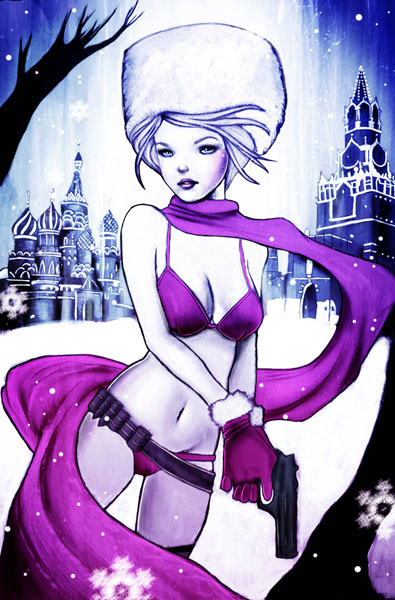| Quote: |
| “All the love and loss. All the chaos. How do you manage it?” |
“Well, it … it’s easier for me. You see, I’m really, really shallow …”
Century is a three part story told at different points in time over a hundred year time span. Once again it sees Alan Moore teaming up with the great Kevin O’Neill. The League is in part the one mentioned in The Black Dossier with Mina Murray, a rejuvenated Allan Quartermain and the immortal Orlando also involved are Raffles and Thomas Carnacki.

Part 1, 1910, sees the team trying to track down the source of a deadly attack in the East End of London as predicted in the dreams of Carnacki. His dreams include the machinations of the occultist Oliver Haddo but these turn out to be of a time in the future. Meanwhile, a familiar killer is stalking the East End and Nemo’s daughter is reappraising her life in the wake of her father’s death and brutal life since running away to London.
It’s good to be reading another League of Extraordinary Gentlemen story though the literary characters are more obscure than in the first two volumes but do allow Moore to focus more on the occult and some are cleverly used if you know the references. This is the first part of a trilogy of books and as such is not quite satisfying on its own. For though the various plot threads are woven together in the end, the larger picture is only beginning to be revealed.

The second part of Moore and O’Neill’s Century, 1969, reduces the team to the core immortals – Mina Murray; Allan Quartermain; and Orlando. Set against a larger than life, Austin Powers style swinging sixties London, the team come together to continue their investigations into the black magician Oliver Haddo and his cult who are making a fresh attempt to usher in a new age with the creation of a Moonchild. The plot revolves around a mix of dead rock stars, sixties counter-culture, London crime bosses and the various investigations into them.
In this episode, the tensions amongst the League come to the fore as Mina struggles to come to term with the prospect of immortality, the responsibilities of leadership and insensitivity of her lovers/colleagues. While the threat is adverted in the psychedelic haze of a drug trip, the book ends with Mina separated from the rest of the team and a flash-forward to the more drab seventies and and the nihilism of punk reflected in the increasingly sour relationship between Allan and Orlando without the still missing Mina.
As usual with these books, there is a lot going on in the background art with reference to many pop culture icons of the sixties and seventies. O’Neill also puts in some references to his other work with, for example, an image of Nemesis in the background of one panel. The book also contains some contemporary references showing a possible moment when Tom Riddle was set on the path to becoming the Dark Lord.

The third and last part of Century, 2009, opens with Orlando losing him(her)self in combat in the Middle East. On returning to London he is tasked with finding Mina and Allan by Prospero and then tracking down the Moonchild that they were supposed to have prevented being born. She finds Allan living on the streets a hopeless junkie who refuses to have anything to do with her or tracking down Mina. Turning to MI6 for help, Orlando inds that Mina has been in a mental institution since the aftermath of the events in Hyde Park at the end of book 2. Together they track down the anti-Christ and confront him in a last battle to prevent the apocalypse heralded by Oliver Haddo.
This volume contains some savage commentary apparently directed at J.K. Rowling and the Harry Potter novels. In this version of reality Harry Potter would appear to be Haddo’s Moonchild and anti-Christ. All in all this series has a much darker tone than the previous ones with themes of nihilism, helplesness and the decay of moral and aesthetic standards. So there is less of a feeling of entertainment and boy’s own adventure but there is plenty or scholars of Moore and his work to get their teeth into. Given the highly irregular release schedule, I am glad that I waited to read all three at once as they would have been unsatisfactory to read as standalone episodes.
For those wanting to delve deeper into the many references littered throughout the series, there are some excellent web pages by Jess Nevins gathering these and is probably essential reading for Brits as well as non-Brits. There is a page for each book – 1910, 1969 and 2009.













 Currently: Watching Game of Thrones ]
Currently: Watching Game of Thrones ]